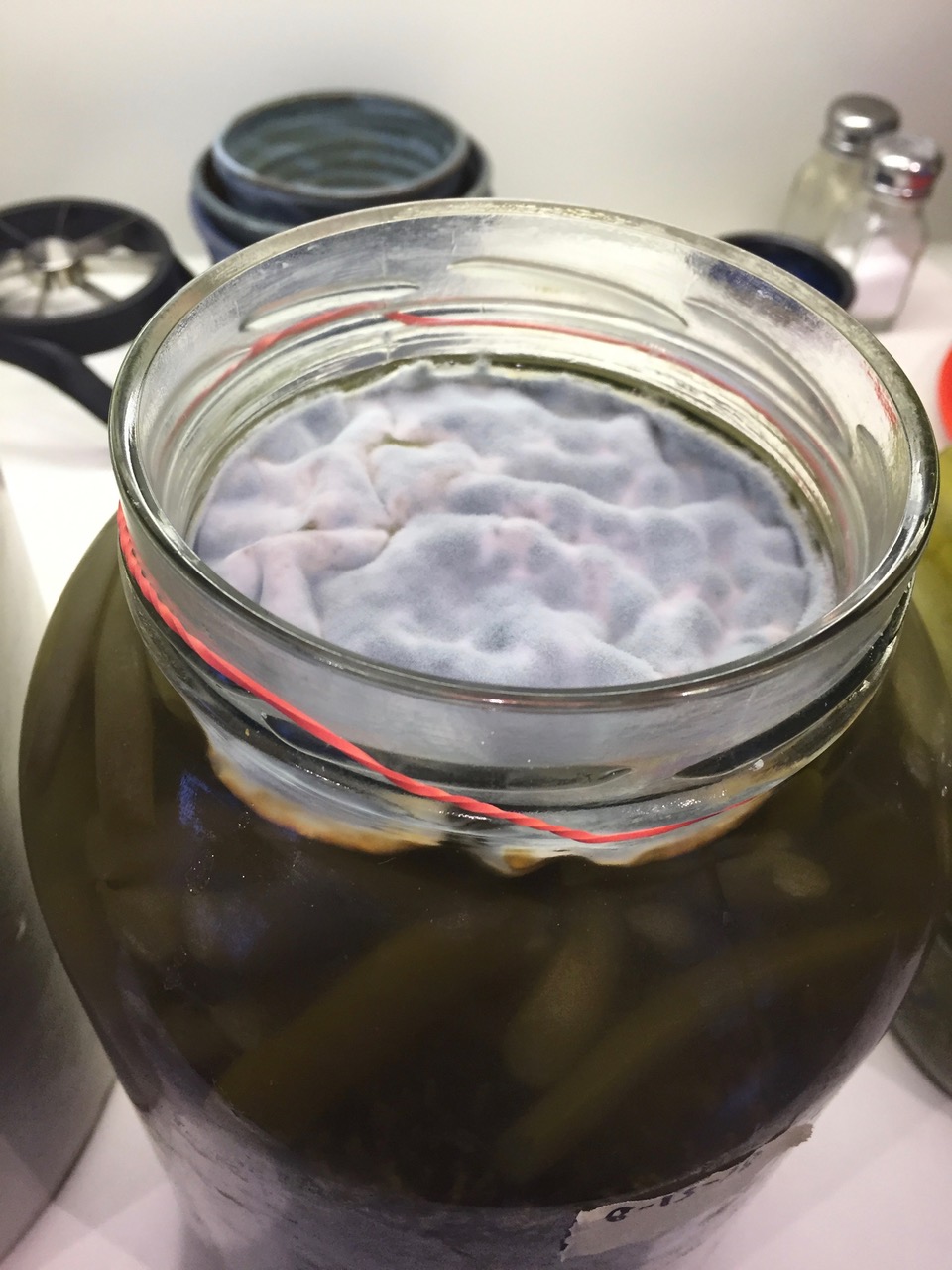Hi.
Thanks for your website. I’ve fermented for over 10 years and until last year had delicious pickles. Last year the pickles in my old crock did not taste good, although the texture, firmness and looks were good. This year all four batches were delicious after they’d fermented on the counter., both green beans and cucumbers. I refrigerated them and they were good for a month. Then after being away for a month I found a blue mold on the surface of brine - on all 4 batches in the refrigerator. Same as that batch last year. They looked great, were firm but the taste is like medicine, like mold, after I'd carefully removed the mold. They are not good to eat. The mold is more leather-like than scum. I don’t think they are dangerous to eat, but sure not pleasant to eat. I’m tossing them. What went wrong? Should I invest in the German pickling jars?
*********************
Hi Rebecca,
You are welcome, glad it helps. Goodness do you have some fine mold mats.
It is good that you tossed them. Somehow you you you have gotten some tenacious little mold spores. The thing is they need oxygen to grow, sometimes when you repack a ferment from a crock there is just enough oxygen in the headspace to allow mold to grow. If the ferment is still a little bit active when you repack it you can actually let it sit out for a day with the lid on tight and as the lid bulges a bit then twist it slightly to burp it. This will push out the oxygen as the CO2 the ferment created is heavier an it will now blanket the pickles to keep them from growing mold. As far as do you need different equipment? It is possible that there are some spores that have taken up residence in your older crock and they are what is giving you grief. Also older crocks sometimes have lead in the glazes whereas the newer ones don’t, so that might also be a reason for you to replace. With what? is personal preference the water trap crocks with the weights are nice, but you must be sure to keep the water full, otherwise they are just as prone to mold and other oxygen loving microbes as an open crock. Fermenting is jars is also a great option.
Cheers,
Kirsten


